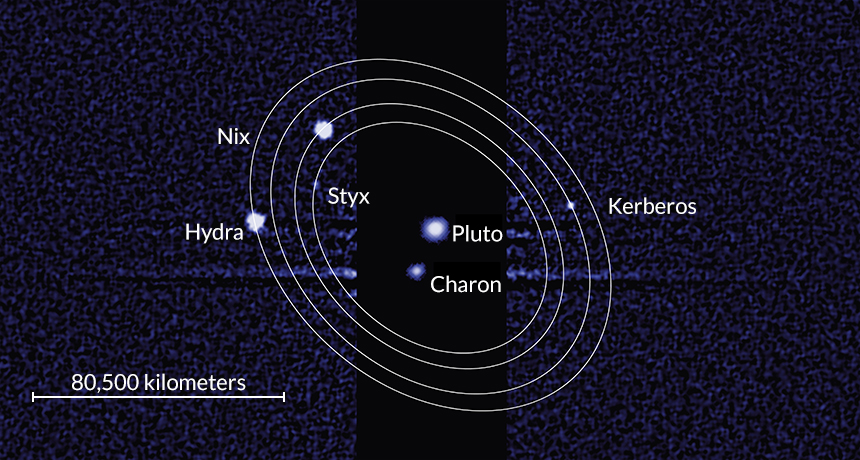Pluto’s four littlest moons probably born in a crash
One satellite, Kerberos, is far darker than its siblings

FOUR’S A CROWD Pluto’s outer moons, in a Hubble Space Telescope image, are tightly packed in nearly synced orbits, suggesting that they formed in the wake of a collision.
NASA, ESA, M. Showalter/SETI Institute